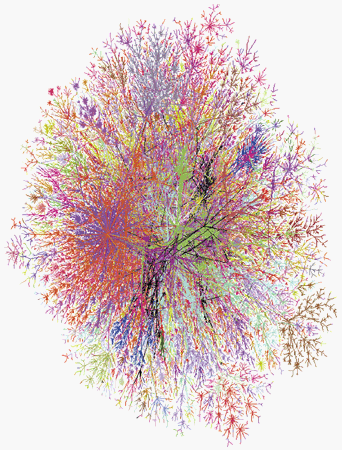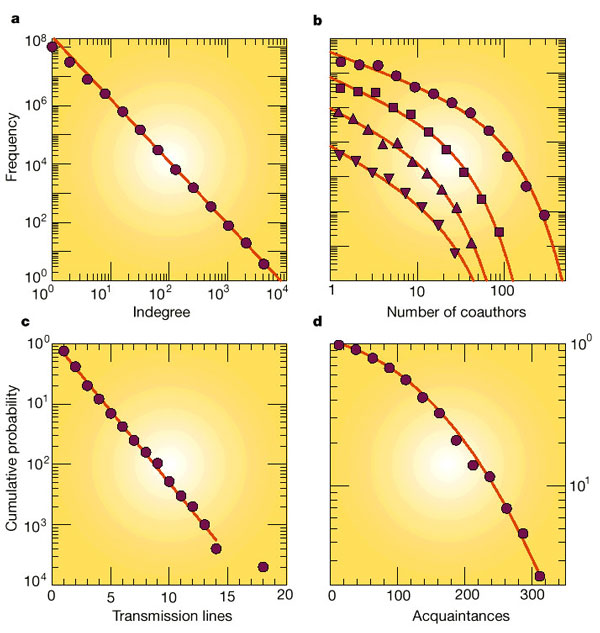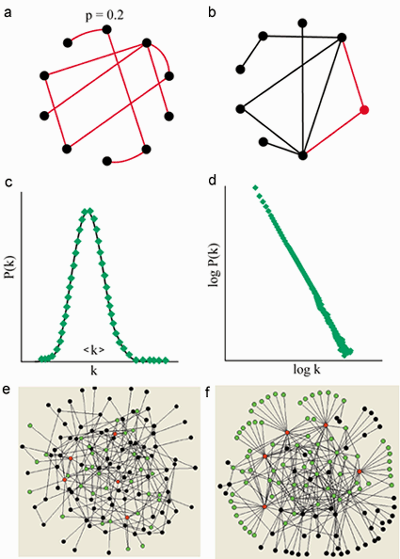
From: To: Date: Message:
Why / when does this e-mail protocol work?
- If this message is for you, read it. Stop.
- If you know the recipient, give him this card. Stop.
- If you don't know the recipient, give this card to someone else. Stop.
- If you hand it to someone in the street at random: No
- If you hand it to someone you know: Possibly
- If you hand it to someone in a collaboration network(say, Oekonux): Probably yes
Such protocols work for communication within networks of a certain structure. What is this structure?
Some Definitions on Networks
- Consist of NODES and EDGES (Links)
- Edges may be DIRECTED or UNDIRECTED
- Social networks: Nodes are individuals or groups of individuals
- Links may be collaborations, acts of communication, acts of exchange
Examples
- Networks with directed links
- World-Wide Web
- Network of long-distance calls
- Networks with undirected links
- Internet (Router level)
- Social Acquaintances
How to characterize a Network?
- Qualitatively: Graphs
- Quantitatively: Ranks + Correlations
- Rank = number of links connecting to/from a node
- Correlations = Properties of adjacent nodes (mixing, clustering)
A network for which a 'characteristic rank' cannot be defined is called scale-free - Formally: number of nodes with rank k: N(k) ~ K-y

Degree Distributions
- Scale-free
(WWW, In-degree) - Classical
(US power grid)
- Social examples of scale-free networks:
- Scientific collaborations (Physics)
- E-mail exchanges
- Long-distance calls
- Non-scale free networks
- Acquaintance
- Friendship

- Left: classical
- Right: scale-free
What is exciting about scale-free networks?
- Small-world properties
- Resilience
- Bandwidth requirements
- 'Non-standard' data transmission properties:
- Tendency to overload hubs
- Efficiency of non-standard transmission protocols (rumour spreading, viral spreading)
- Form by self-organization processes
Other properties in real social SON:
- Clustering, combination of local and global collaborations
Conditions
- no limits to link formation
- free association
- growing networks
- preferential attachment
Obstacles
- earth-bound networks
- aging (old-boys networks)
Issues/Theses
- Self-organized networks as tools/machines for information exchange/collaboration/production.
- Scale-free social networks are made possible by technology, but their functioning is not a technological issue.
- These networks are not non-hierarchical.
- Hierarchy in such networks is not primarily a problem of personal virtue ('taking responsibility') or personal misconduct.
- Hierarchy emerging from self-organization reflects functionality and is inherently transient.
 |
| 